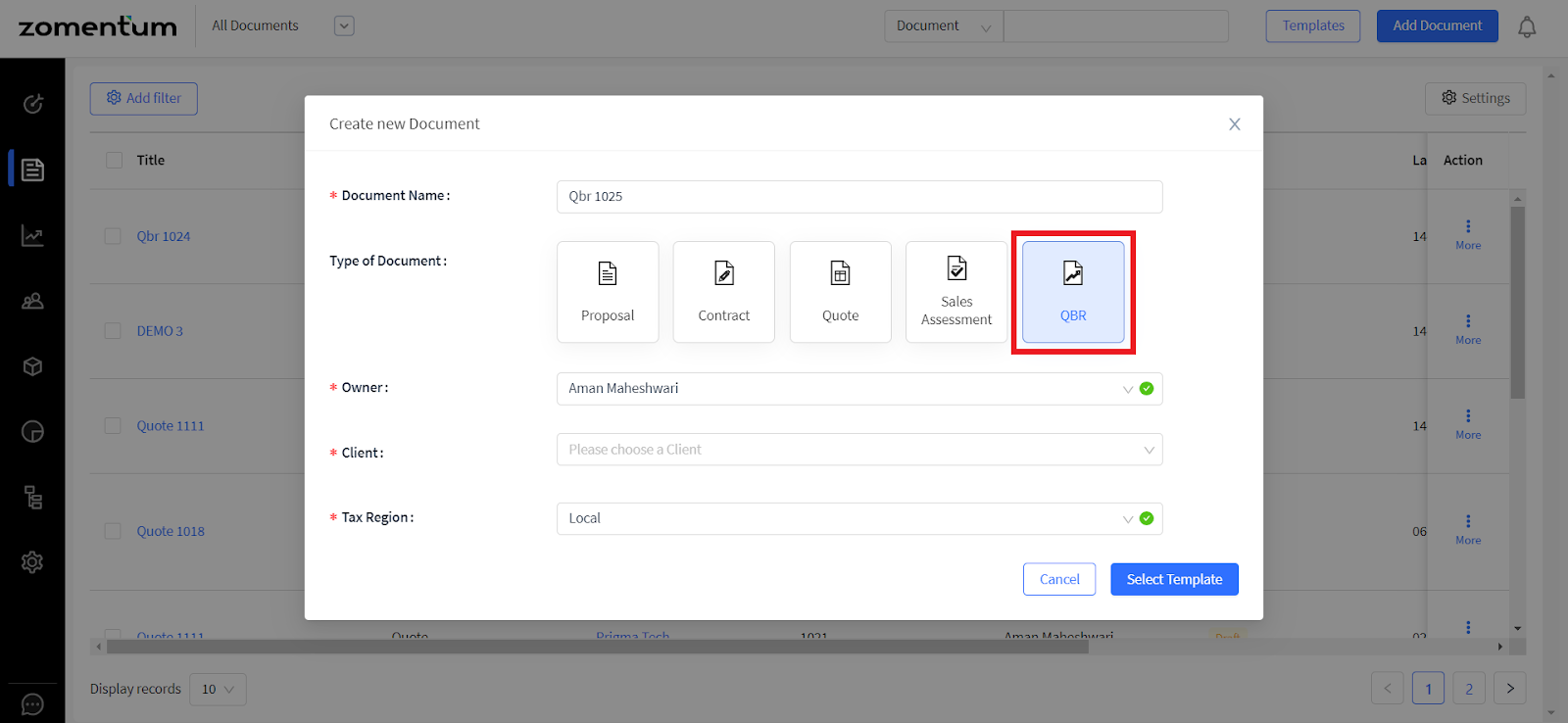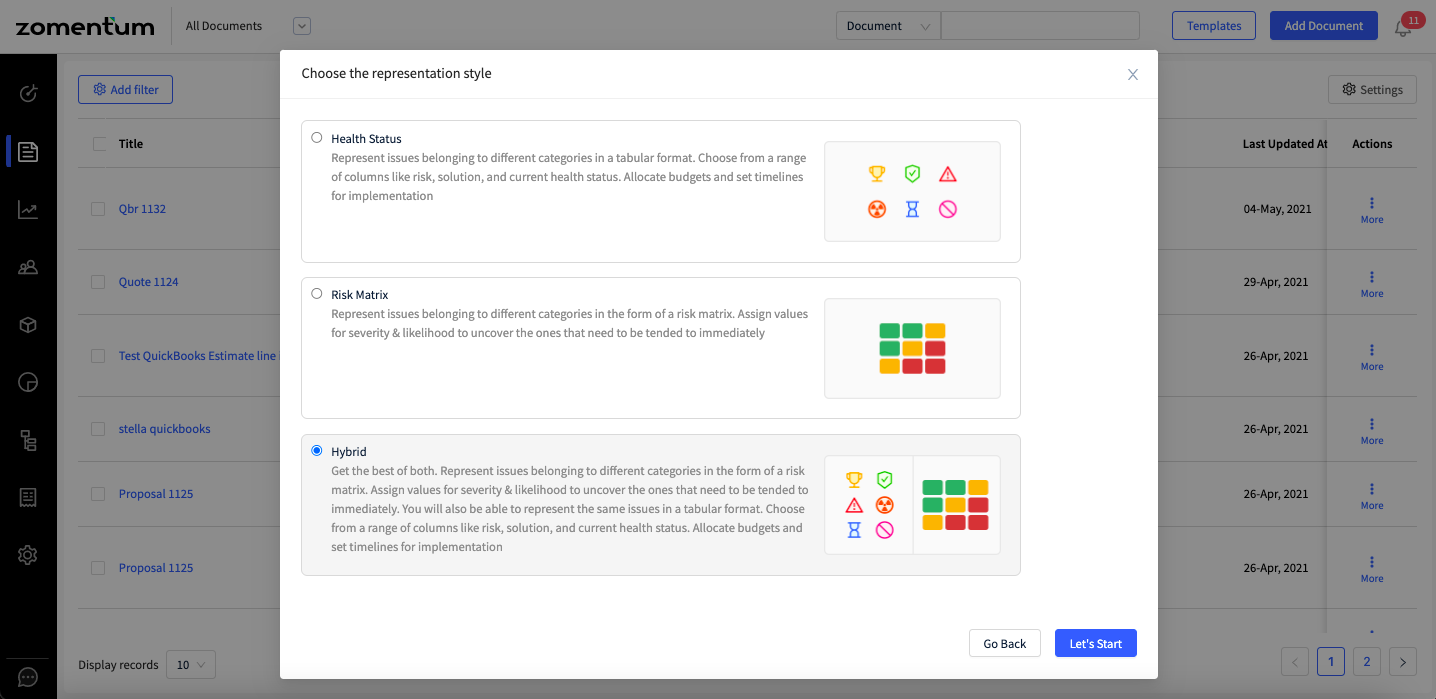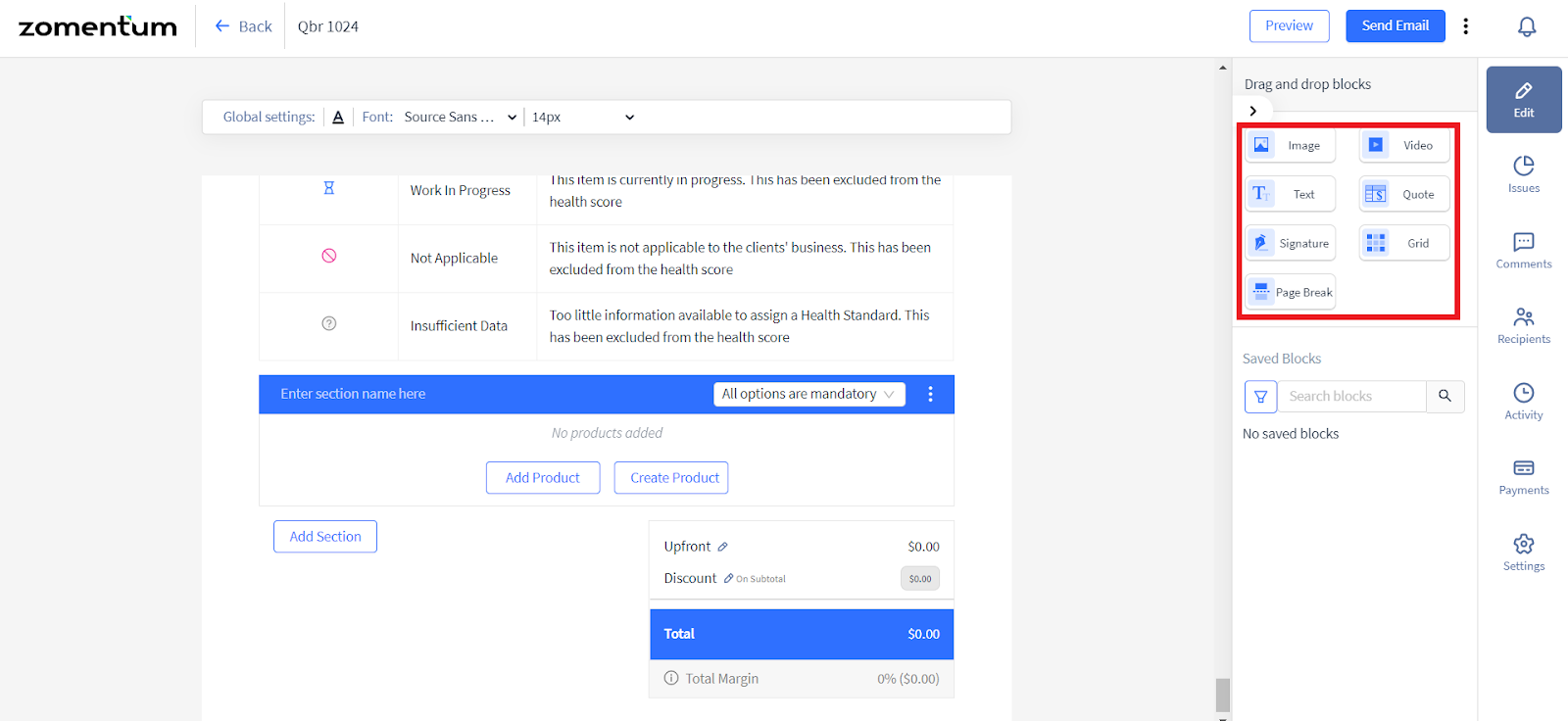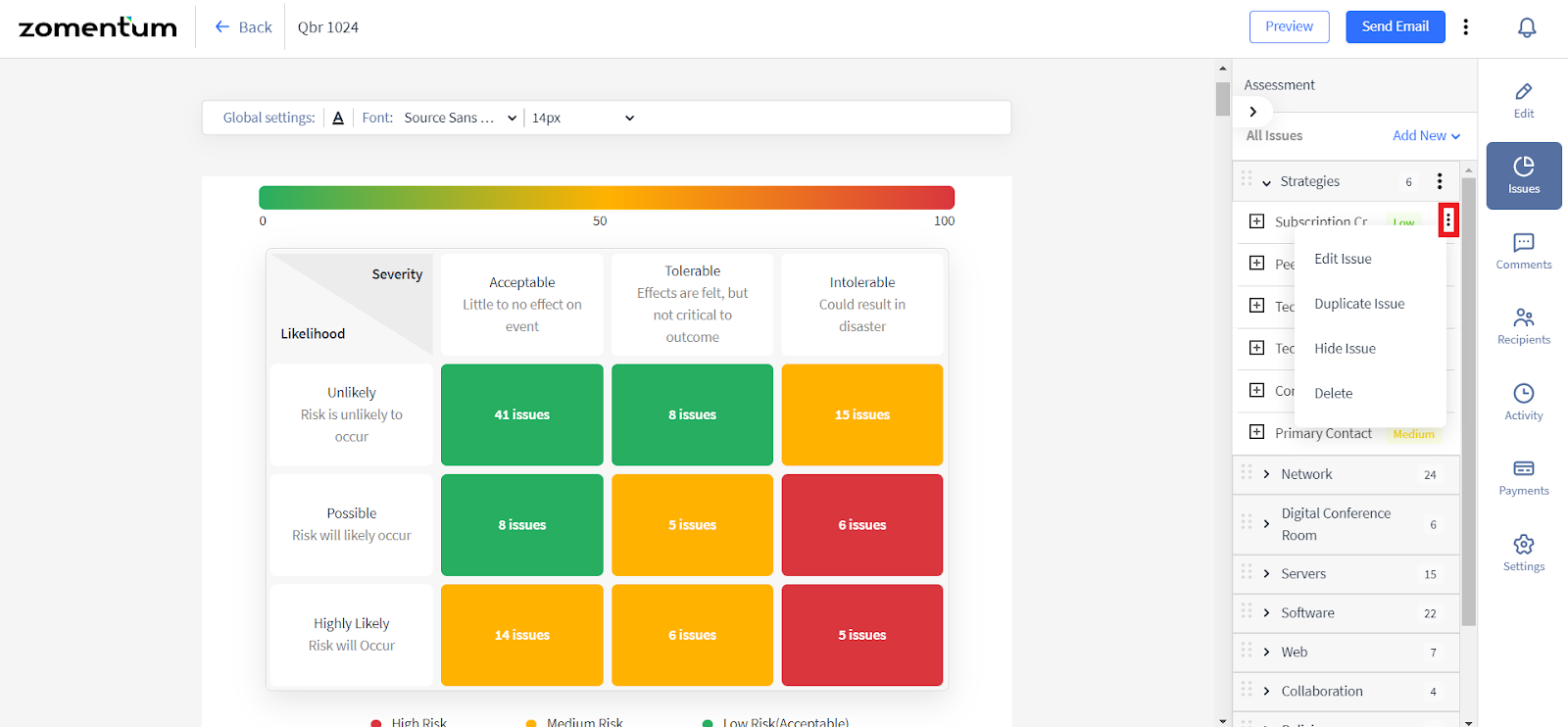Table of Contents
Section 1
What is QBR?
Quarterly Business Reviews will enable MSPs to create easy-to-read, customizable reports to take stock of their clients’ IT infrastructural needs, identify areas of concern in their environment, and recommend solutions and strategies to ensure that their clients are on top of compliance. Given the ease with which documents can be prepared, QBRs offer the same level of simplicity so that MSPs can spend more time solving problems for their clients.
With Zomentum’s QBR document, users can:
Have access to a ready-to-use template with over 100+ issues across 10 categories to help reduce report creation time and provide depth in terms of problems that may be addressed.
Assign health statuses for issues, highlight risks, and recommend solutions to quickly identify possible red flags/gaps and use this as an opportunity to upsell.
Assess risk-related attributes with our existing sales assessment risk matrix to identify & quantify gaps in infrastructure. Help your client understand the value your MSP brings to the table.
Creating QBRs with Zomentum
The QBR Report in Zomentum consists of three components that will help your customers have a detailed understanding of the potential risks and how they can be mitigated.
To start, you can refer to our QBR Template, or you could start with a 'New Document' and add the necessary blocks.
Navigate to the ‘Documents’ module from the left-hand menu
Click on Add Documents and select the document type as QBR.
Select the ‘QBR Template’ under the Global Templates section or choose your template if you already have one uploaded, and then click on ‘Create Document’.
Select the representation style between Health Status, Risk Matrix or the Hybrid Mode:
Health Status - a symbolic representation of the health status of each mentioned in the table form:
Risk Matrix – the process of detecting, categorizing, and characterizing issues faced by customers in a 3*3 matrix template which helps customers to prioritize the issues identified.
Hybrid - is a combination of the Health Status and Risk Matrix model.
Adding a Category/Issue in Risk Matrix
Click on ‘Issues’ on the right panel and then click on ‘Add New’. From the dropdown, select the option to add a new Category/Issue. Add the title for the new Category or complete the form if adding a new Issue.
Adding a New Issue:
Issue: enter the title of the Issue, as you want it to appear in the Risk Report
Category: helps to categorise issues by various types such as Infrastructure, Disaster Management, Security, managed service etc.
Severity (Impact): scale the degree of consequence that the customer could face if the issue is not resolved (Acceptable, Tolerable, Intolerable)
Likelihood (the level of possibility): helps the MSP’s to scale the probability of the risks and consequences that the customer might have to face if the issue is unresolved. (Unlikely, Possible, Highly Likely)
Status: present condition of the issue
Risk: a user can drill down on the details by describing the issue for the customer.
Solution: suggest a suitable solution to the issues described in the description. This will help your clients to make better decisions regarding the issues faced by them.
Health: a symbolic representation of the health status of the issue.
Quarter: the projected quarter of the year of the project implementation.
Target Year: The year in which the project implementation will take place.
Budget: budget allocation for the implementation to fix the issue.
Risk Score - showcases the seriousness of the customer’s risk on a scale of 100.
The Risk score is a calculated number (score) that reflects the severity of a risk due to various factors. Typically, the project risk scores are calculated by multiplying likelihood and severity, though other factors such as weighting may also be part of the calculation.
Weight Score of each cell ** = Weightage for each cell in matrix * Number of issues in each cell (on a scale of 100)
The Risk Scoring Method: An MSP who wants to rate the risk of their users will find this Risk assessment matrix a tool to create a score based on weightage and the number of issues in the cells.
Risk Assessment Matrix - Score Calculation (based on sample use-case)
Details on Health Status: The best way to help your customers win against the risk factors is to walk them through your recommendation for each potential risk they might face. This can be found in the ‘Risk Details’ section.
Once the Assessment matrix and Risk Details are created, the next step is to recommend products and services to your client to mitigate the high-risk concerns.
For example, you can drag and drop the ‘Quote-Block’ to add products against some of the recommendations for the issues mentioned in the report.
Click here to learn more about Blocks in Zomentum.
Editing the risk matrix and the QBR document
The ‘Issue’ tab on the right-hand side of the document builder will give you the ability to edit the category and issues logged in the QBR report.
Edit or Delete a Category:
Edit, Duplicate, Hide or Delete an issue from each of the categories:
Saving the QBR as a Template
Users have the ability to save a newly created QBR document for future purpose by saving it as a template.
Click on the three vertical dots next to ‘Send Email’ and select the ‘Save as new template’ option. The MSP’s also have the ability to edit or delete the template if needed. Learn more about Templates here.
Users can now save a newly created QBR document for future use by saving it as a template.
Click on the three vertical dots next to ‘Send Email’ and select the ‘Save as new template’ option. The MSP can also edit or delete the template if needed. Learn more about Zomentum Templates here.
When you create QBR templates, you can use that template only to create that specific type of QBR document in the future. For example, if the document you are saving as a template represents a Risk Matrix style, you can only create other QBR documents of the same style. You can view the template type as a tag before creating the document.














